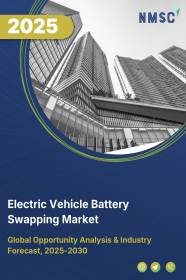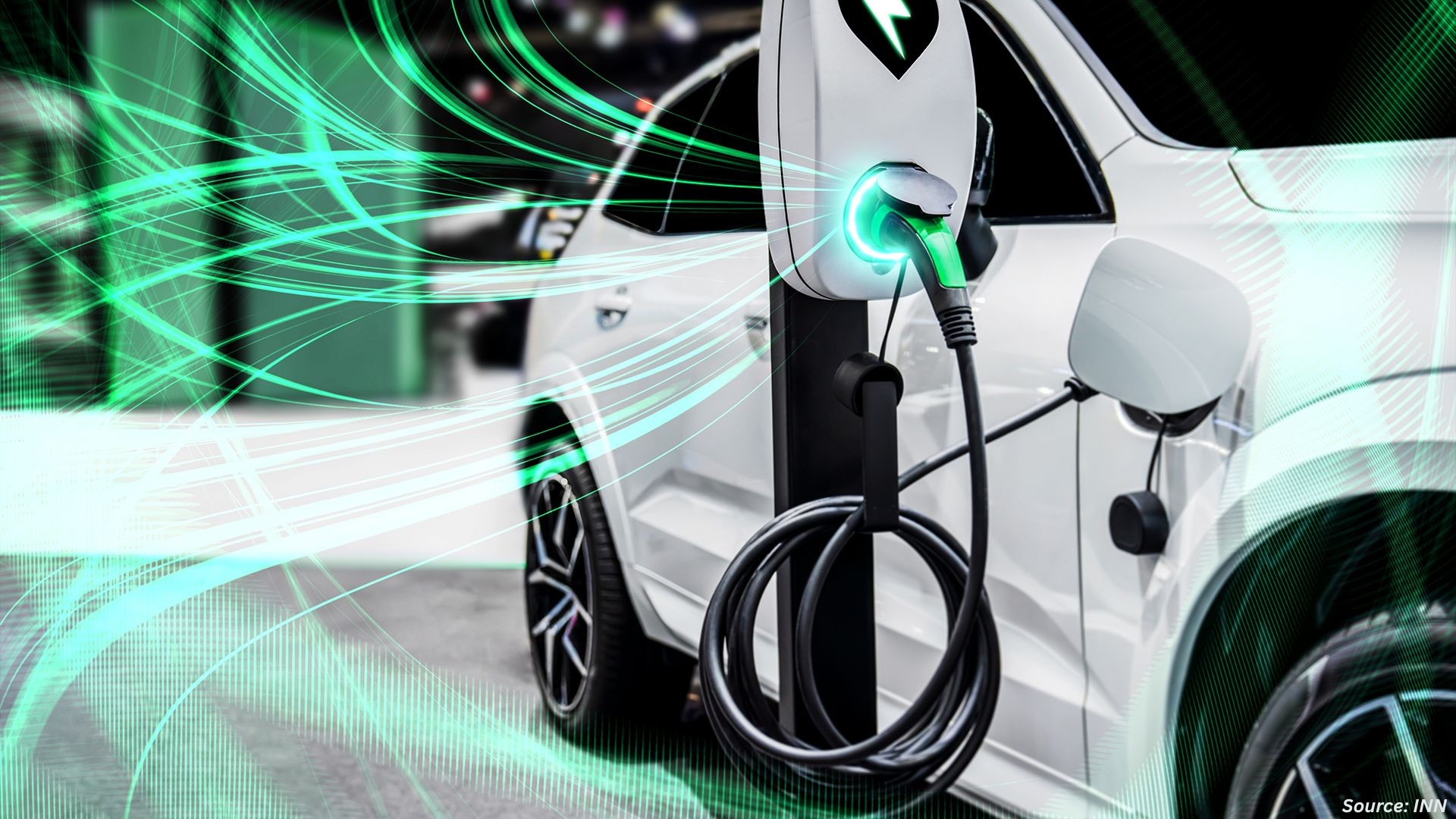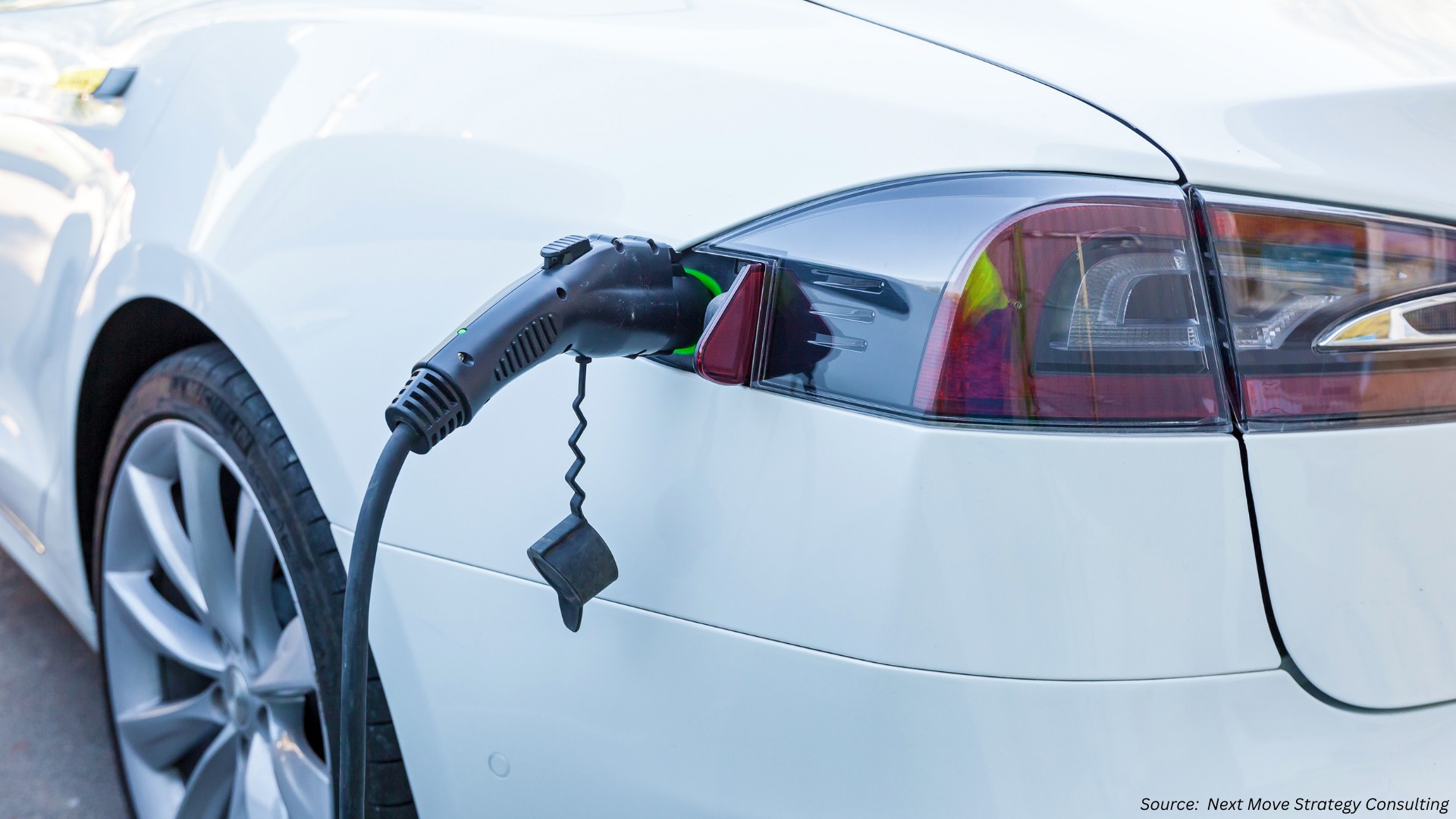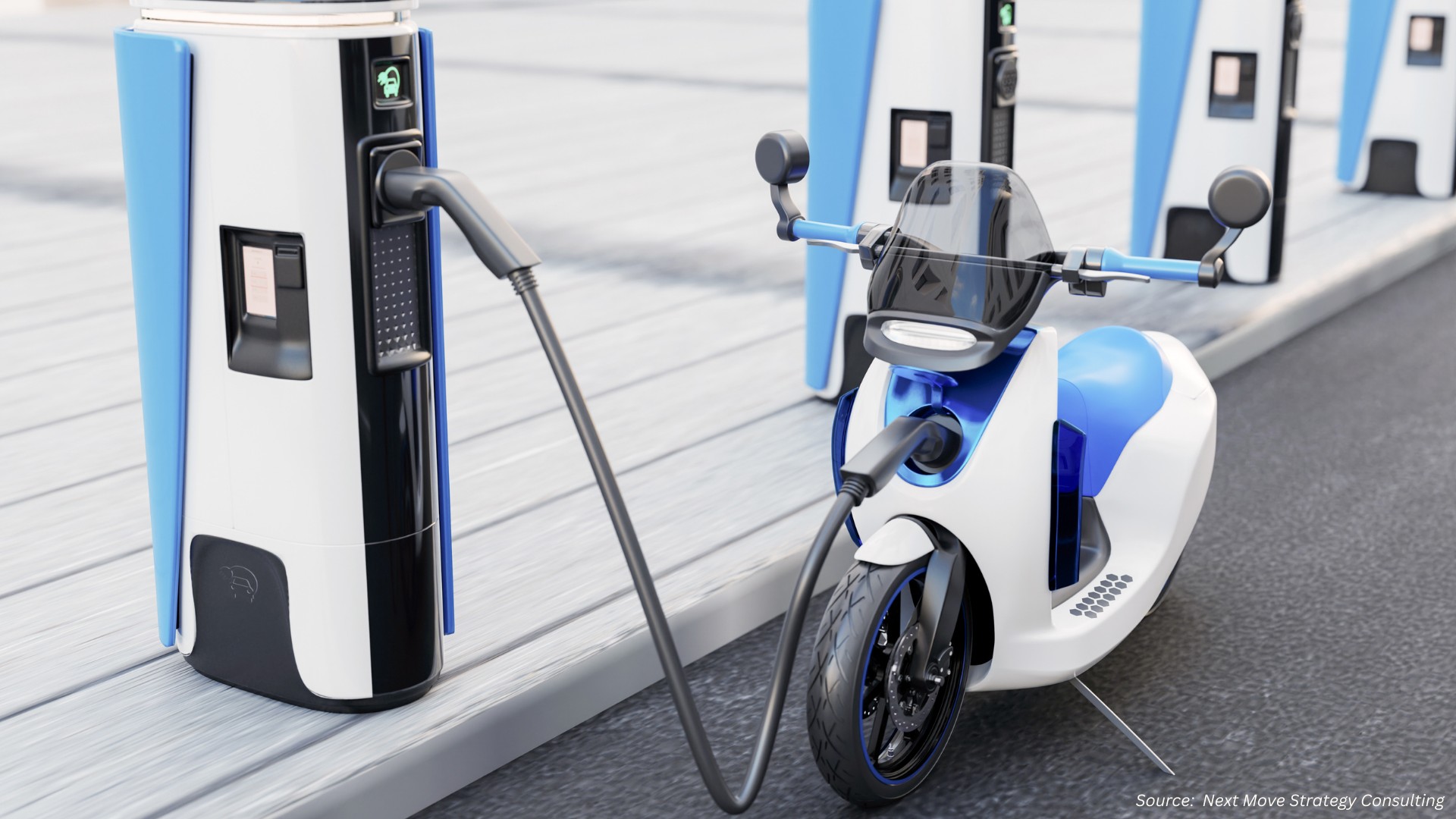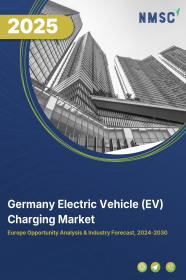
Germany Electric Vehicle (EV) Charging Market By Type of Charger (AC Chargers, and DC Chargers), By Charging Speed (Level 1, Level 2, and Level 3), By Connector Type (J1772 (Type 1), Mennekes (Type 2), CCS (Combined Charging System), CHAdeMO, and Others), By Charging Modes (Mode 1, Mode 2, Mode 3, and Mode 4), By Installation (Fixed and Portable), and By End User (Commercial and Residential) – Opportunity Analysis and Industry Forecast 2023–2030
Industry: Automotive & Transportation | Publish Date: 08-Sep-2025 | No of Pages: 196 | No. of Tables: 142 | No. of Figures: 87 | Format: PDF | Report Code : AT850
Market Definition
Germany Electric Vehicle (EV) Charging Market was valued at USD 1.28 billion in 2022, and is predicted to reach USD 9.12 billion by 2030, with a CAGR of 28.6% from 2023 to 2030. Electric vehicle chargers are defined by the amount of energy delivered to the vehicle’s battery per unit of time. It is an infrastructure that is used to connect the plug-in electric vehicle to an electrical outlet to charge the battery of the vehicle. Electric vehicle chargers are used to provide charging to EVs with a battery and the electrical source that helps to charge the battery.
Electric vehicles, neighborhood EVs, and plug-in hybrids can all be charged at a charging station by connecting to an electrical source. Advanced features including smart meters, cellular connectivity, and network access are available on some charging stations.
The charging of EVs can be carried out through several levels of charging such as level 1, level 2, and level 3. The higher the level of charging, the faster the charging process causing more power to be delivered to the vehicle. The use of electric vehicles significantly reduces the carbon footprints released into the atmosphere, which contain toxic gas. The growing threat of carbon emissions and other harmful gases stemming from transportation has triggered the vital necessity of adopting electric vehicles.
In addition, the penetration of EV charging is high in commercial spaces as compared to residential ones. Long-distance trips would benefit from ultra-fast charging capabilities made possible by public charging infrastructure. However, EV chargers for residential spaces offer significant growth potential as they are affordable and more convenient for charging electric vehicles as compared to commercial charging stations.
Strategic Partnerships and Technology Advancements Accelerate Infrastructure Growth in Germany
Germany’s EV charging sector is experiencing rapid growth, driven by a combination of large-scale public–private partnerships and cutting-edge technological advancements. National fast-charging network initiatives are creating a countrywide system of high-power charging stations strategically located along highways, urban centers, and other high-demand areas. Collaborations between global companies—such as IKEA’s partnership with Mer to install over 1,000 charging points at retail locations—and infrastructure leaders like VINCI Concessions are significantly increasing charging accessibility. At the same time, technological breakthroughs, including Ionity’s upcoming rollout of 600 kW megawatt-class chargers, promise to drastically reduce charging times and enhance the customer experience. These developments are reinforcing Germany’s position as a frontrunner in Europe’s EV infrastructure race and are directly supporting the acceleration of EV adoption across the country.
Government Funding and Policy Support Drive Nationwide EV Charging Expansion
The German government’s ambitious goal of deploying 1 million public charging points by 2030 is backed by a robust policy framework and substantial financial commitments exceeding €8 billion. A series of supportive measures—including grants, subsidies, and tax incentives—are encouraging both private and municipal investment in charging infrastructure. New building regulations now require EV charging readiness in residential complexes, commercial properties, and public parking areas, ensuring a future-proof approach to mobility planning. Additionally, the alignment of EV infrastructure policy with Germany’s broader renewable energy and climate goals is fostering a sustainable, integrated transportation network. This combination of long-term policy stability, regulatory clarity, and direct financial support is creating a fertile environment for rapid infrastructure growth while boosting investor confidence in the sector.
High Installation Costs Limit Fast-charging Deployment in Low-demand Regions
The rollout of high-capacity DC fast chargers in Germany faces a significant financial barrier due to high initial installation costs. Deploying these chargers requires substantial investment in advanced equipment, complex site preparation, and grid connection upgrades—often involving reinforcement of aging electrical infrastructure. While demand for rapid charging is surging in metropolitan hubs and major transit corridors, less populated or rural areas present a lower return on investment, making them less attractive for private operators. This cost imbalance risks creating uneven infrastructure distribution, with underserved regions potentially facing slower adoption rates and reduced accessibility to fast-charging facilities.
Growing Vehicle-To-Grid (V2G) Adoption Offers New Revenue Streams and Grid Benefits
Vehicle-to-Grid (V2G) technology is emerging as one of the most transformative opportunities in Germany’s EV charging market. By enabling two-way energy transfer between electric vehicles and the power grid, V2G allows EVs to act as mobile energy storage units that can discharge power back to the grid during peak demand periods. This capability offers multiple benefits: it enhances grid stability, supports the integration of intermittent renewable energy sources, and opens up new revenue streams for EV owners and charging operators through energy trading or demand response programs. Germany is already taking a leadership role in Europe’s V2G sector, with ISO 15118-20 communication standards now in place for DC V2G and further standardization for AC expected by 2026. As regulatory frameworks evolve and pilot projects transition into full-scale deployments, V2G adoption is set to accelerate, positioning it as a critical component of Germany’s sustainable energy and mobility ecosystem.
Competitive Landscape
The Germany Electric Vehicle (EV) Charging industry includes several market players such as Siemens AG, ABB Ltd, Schneider Electric SE, Tesla Germany GmbH, ChargePoint Holdings, Inc., Delta Electronics, , Kempower Oyj, Alfen N.V., Heliox Energy B.V., Zaptec ASA, , Efacec Power Solutions S.A., Autel Intelligent Technology Corp., EV BOX, Enphase, and Hitachi Energy.
Key Benefits
-
The Germany Electric Vehicle (EV) Charging market report provides a quantitative analysis of the current market and estimations through 2023-2030 that assists in identifying the prevailing market opportunities to capitalize on.
-
The study comprises a deep dive analysis of the market trend including the current and future trends for depicting the prevalent investment pockets in the market.
-
The information related to key drivers, restraints, and opportunities and their impact on the market is provided in the report.
-
The competitive analysis of the market players along with their market share in the Germany Electric Vehicle (EV) Charging market.
-
The SWOT analysis and Porter’s Five Forces model are elaborated in the study.
-
Value chain analysis in the market study provides a clear picture of the stakeholders’ roles.
Germany Electric Vehicle (EV) Charging Market Key Segments
By Type of Charger
-
AC Chargers
-
Mode 1 (2.3 kW)
-
Mode 2 (2.3 kW)
-
Mode 3 (3.7 kW to 22 kW)
-
-
DC Chargers
By Charging Speed
-
Level 1
-
Level 2
-
Level 3
By Connector Type
-
J1772 (Type 1)
-
Mennekes (Type 2)
-
CCS (Combined Charging System)
-
CHAdeMO
-
Others
By Charging Modes
-
Mode 1
-
Mode 2
-
Mode 3
-
Mode 4
By Installation
-
Fixed
-
Portable
By End User
-
Commercial
-
Commercial Public EV Charging Stations
-
Highway Charging Stations
-
Fleet Charging Stations
-
Workplace Charging Stations
-
-
Commercial Private EV Charging Stations
-
-
Residential
-
Private Homes
-
Apartments
-
Key Players
-
Siemens AG
-
ABB Ltd
-
Schneider Electric SE
-
Tesla Germany GmbH
-
ChargePoint Holdings, Inc.
-
Delta Electronics
-
Kempower Oyj
-
Alfen N.V.
-
Heliox Energy B.V.
-
Zaptec ASA
-
Efacec Power Solutions S.A.
-
Autel Intelligent Technology Corp.
-
EV BOX
-
Enphase
-
Hitachi Energy
REPORT SCOPE AND SEGMENTATION:
|
Parameters |
Details |
|
Market Size in 2022 |
USD 1.28 Billion |
|
Market Volume in 2022 |
116 Thousand Units |
|
Revenue Forecast in 2030 |
USD 9.12 Billion |
|
Growth Rate |
CAGR of 28.6% from 2023 to 2030 |
|
Analysis Period |
2022–2030 |
|
Base Year Considered |
2022 |
|
Forecast Period |
2023–2030 |
|
Market Size Estimation |
Billion (USD) |
|
Growth Factors |
|
|
Companies Profiled |
10 |
|
Market Share |
Available for 10 companies |
|
Customization Scope |
Free customization (equivalent up to 80 working hours of analysts) after purchase. Addition or alteration to country, regional, and segment scope. |
|
Pricing and Purchase Options |
Avail customized purchase options to meet your exact research needs. |

















 Speak to Our Analyst
Speak to Our Analyst




